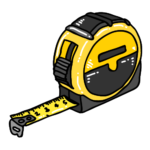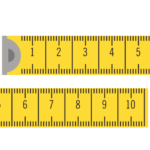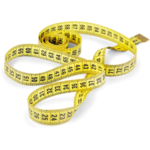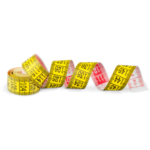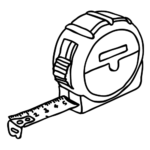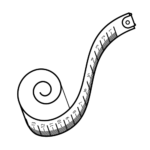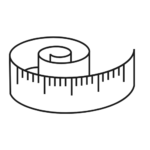Tape Measure Reading
Your Guide to Reading Tape Measures
Mastering Tape Measure Readings Made Easy!

Featured How-To Guides
Latest Blog Posts
A standard tape measure in the United States uses inches as the base measurement with sixteen tick marks in between each inch marker. This is considered to be an imperial tape measure. The smallest tick marks denote the odd numbered sixteenth marks such as one-sixteenth, three-sixteenths and fifteen-sixteenths. Between the odd numbered sixteenth tick marks are longer tick marks noting even numbers. In order to make measuring easier to remember and record, each even tick mark is divided by two until it reaches its lowest common denominator.
So, two-sixteenths is divisible by two down to one-eighth, six-sixteenths to three-eighths, ten-sixteenths to five-eighths and fourteen-sixteenths to seven-eighths. The next longest tick marks of four-sixteenths and twelve-sixteenths are divisible by two twice down to one-fourth and three-fourths. And finally eight-sixteenths is divisible by two down to one-half.
This website was not only built to tell you how to read a tape measure, it was also built to show you how to read a tape measure.
Click the Button Below to See It on Amazon
Measurements on Tape Measures
We are going to learn about tape measures or measuring tapes, whichever you prefer. Both ways are fine to use since they both mean the same thing.
The Imperial Tape Measure

You first need to know that the inch marks go all the way across and then there are 16 lines between each inch mark. You first need to know that the inch marks go all the way across and then there are 16 lines between each inch mark so this is one sixteenth, two sixteenth, three sixteenth, four sixteenth and so on. There are also a little bit longer lines that are 1/8 inch line so it’s one eighth, two eighths, three eighths, four eighths, five eighths, six eighths and so on. Then you go up to the next longer line and you have quarters so ¼, 2/4, ¾, four quarters and then the longest lines being the half-inch marks it’s very easy to do math using a tape measure and it’s super easy to get half of a fraction.
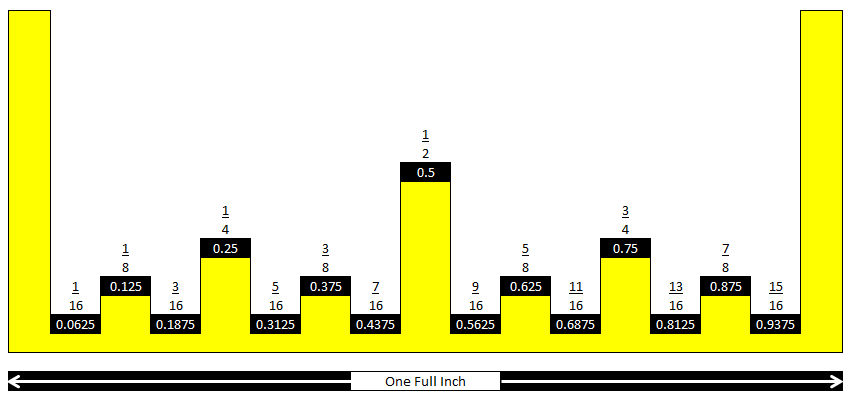
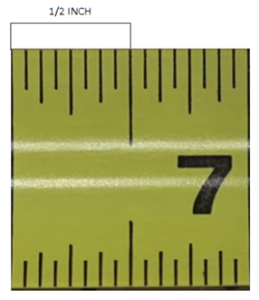


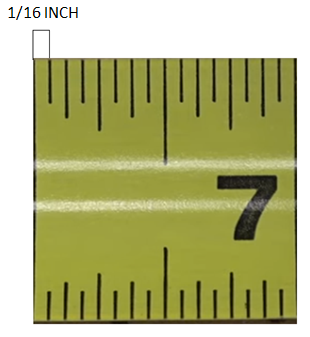
Let’s say we have seven eighths to get half of seven eighths we double the denominator which is 8 and make it 16 so then we’re going to look for 7/16 so 1 2 3 4 5 6 7 so this is 7/16 which is exactly half of seven eight the same applies to 1/2 so if you to make it simple you could do 1 half double the denominator 2/4. It’s going to be 1/4 is exactly ½ of ½. Another trick you can do with a measuring tape if I measure a board you can see that it is actually 11 and eleven sixteenths and to find half of eleven and eleven sixteenths might be difficult so if I want to find the center point of the board I can put my tape at an angle and measure to the 12 inch mark. You are tied on one end and you can pull down to 12 inches and make a mark at six inches because I know that’s half of 12. That’s easy so now you can come back and you can measure to there and it’s 5 and 7/8ths that way and 5 and 7/8th this way so I’ve found the center of point of my board very easily.
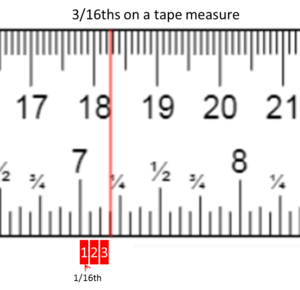
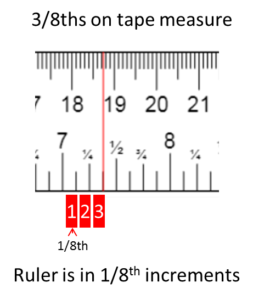

The Metric Tape Measure
The first thing to know about metric is that everything is broken up into increments of tens, hundreds and thousands.
When converting from metric to imperial you can get a metric and imperial tape measure. You will know that one inch is 25.4 millimetres and you can see the markings on the tape measure below at the inch mark and you can see that the mm come out on the 25.4 mark.

In the illustration above, one inch and above is the milometer centimetre conversion you’ll see that this is one two and then five point four millimeters is one inch so if you’re ever doing projects or builds where you’re converting from one to the other that’s a handy number to have.
Markings on a Tape Measure
Black markings at Foot Marks
You will notice that every foot has a nice large arrow on it to indicate that you’re at the every 12 inch increment so this is the two- foot mark at 24 inches but there are also red numbers here these red numbers start over at every foot so after I get to one foot it continues on 13 14 15 16 17 18 19 20 to 24 but it also starts back over at 1 so for people who are have more difficulty reading a tape measure on now know that this mark right here is 1 foot and 7 inches and the same applies if you go up to 3 feet so here I have the 3 foot mark and I can go to 3 feet 7 inches and then I can add 1/2 1/4 1/8 3/16.
Red Rectangle Around Numbers starting at 16 Inch Mark
Have you ever said, “Why is 16 inches marked on a tape measure ?” Most is not all of the imperial tape measures have a red rectangle around certain numbers starting at 16 inches. These are the 16 inch centers for building purposes when it comes to building walls. Most states in the united states have code that states that each wall stud should be 16 inches on center. Measuring tape manufacturers put a red rectangle around the numbers 16, 32, 48, 64 and so on at increments of 16 inches.
As you can see in the marked tape measure below examples of the red rectangle being used.
Diamonds on a Tape Measure
One of the lesser common markings on measuring tapes are marked tape measures with the black diamonds, black triangles, red diamonds, red dots or even black dots (You can see examples below). You will notice these markings just beyond 19 inches it’s actually 19.2 inches and then it’s found again at 38.4 inches and again at 57.6 inches and so on every nineteen point two inches down the tape.
The reason for this is that nineteen point two in in the united states is where floor joists go so while studs are 16 inches on center floor joist or 19.2 on center. It sounds like a very odd measurement but there’s a reason for it the most commonly found boards in the United States are 8 foot long timbers so if you divide 8 feet which is 144 inches by 5 you get 19.

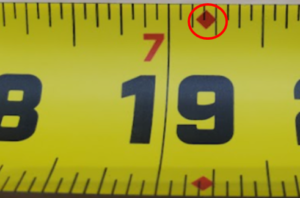
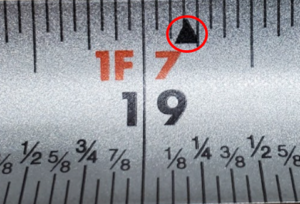
How to read a tape measure videos
8ths on a Tape Measure
1/8 on A Tape Measure
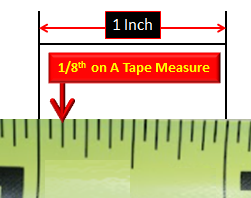
5/8 on A Tape Measure

3/8 on A Tape Measure
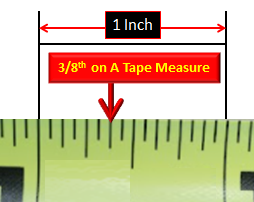
7/8 on A Tape Measure
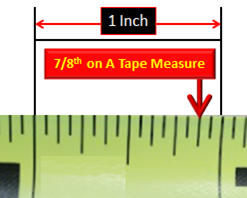
16ths on a Tape Measure
1/16 on A Tape Measure
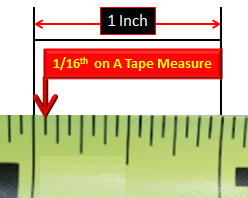
5/16 on A Tape Measure

9/16 on A Tape Measure

13/16 on A Tape Measure
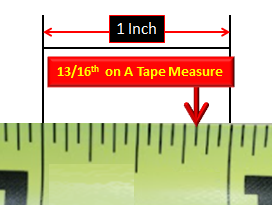
3/16 on A Tape Measure

7/16 on A Tape Measure
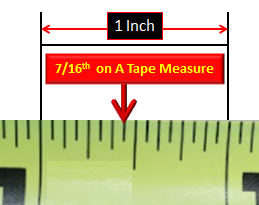
11/16 on A Tape Measure
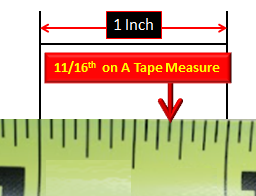
15/16 on A Tape Measure
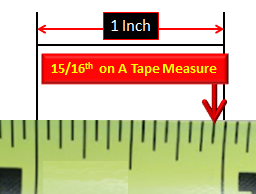
Tape Measure Clipart
